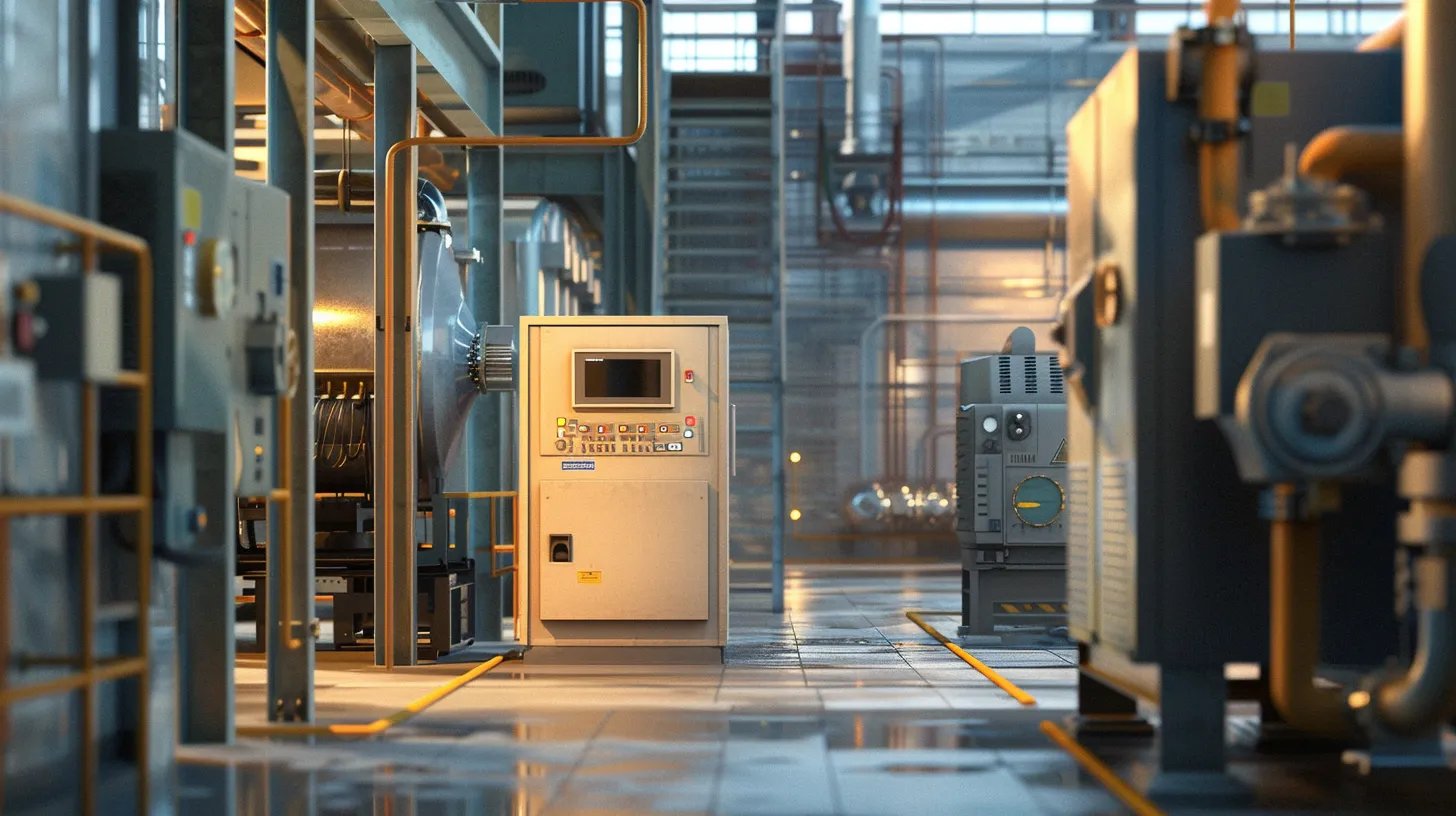
I remember when I first started working with variable-frequency drives, or VFDs. They seemed like a fantastic solution to many motor control problems. However, over time, I noticed that they also come with certain drawbacks.
Variable-frequency drives can introduce issues such as harmonic distortion, increased initial costs, and potential electromagnetic interference, which need to be carefully managed in industrial applications.
Understanding these drawbacks is important to make informed decisions when implementing VFDs.
What Are the Disadvantages of VFD Drives?
When I first installed a VFD in one of my projects, I was excited about the energy savings and control it offered. But soon, I began to notice some disadvantages that are worth considering.
Variable-frequency drives can introduce harmonic distortion into the power system, have higher upfront costs compared to traditional starters, require proper cooling, and demand more complex maintenance procedures.
These factors can impact both the initial investment and the long-term operation of your equipment.
Higher Initial Costs
One of the first drawbacks I encountered was the higher initial cost of VFDs.
- Equipment Cost: VFDs are more expensive than simple motor starters.
- Installation Expenses: Setting up a VFD system may require additional wiring and protective devices.
- Return on Investment: While energy savings can offset costs over time, the payback period may be lengthy.
Harmonic Distortion1
VFDs can cause harmonic distortion in the electrical system.
- Power Quality Issues: Harmonics can affect other equipment connected to the same power source.
- Interference: Sensitive devices may experience malfunctions due to distorted waveforms.
- Mitigation Measures: Installing harmonic filters or reactors adds extra cost and complexity.
Cooling Requirements2
VFDs generate heat during operation, which must be managed.
- Heat Generation: The electronic components in VFDs produce significant heat.
- Cooling Systems: May require additional fans or heat sinks to dissipate heat.
- Environmental Considerations: Proper ventilation is necessary to prevent overheating.
Complex Maintenance3
Maintaining VFDs can be more complex than traditional systems.
- Technical Expertise: Requires skilled personnel for troubleshooting and repairs.
- Component Wear: Electronic parts may degrade over time, needing regular inspection.
- Downtime Risks: Failure of a VFD can lead to operational shutdowns.
What Is the Problem with the Variable Frequency Drive?
In my experience, certain problems can arise specifically from the use of VFDs.
Variable-frequency drives can introduce electromagnetic interference (EMI), stress motor insulation due to voltage spikes, and may cause unexpected equipment behavior if not properly installed.
These issues can affect both the VFD and other equipment in the facility.
Electromagnetic Interference (EMI)4
VFDs can emit electromagnetic fields that interfere with other devices.
- Signal Disruption: Can affect communication lines and sensors.
- Shielding Requirements: Cables may need to be shielded and grounded properly.
- Regulatory Compliance: Must meet EMI emission standards, adding complexity.
Motor Insulation Stress
Voltage spikes from VFDs can damage motor insulation.
- Premature Insulation Failure: Leads to motor breakdowns.
- Need for Inverter-Duty Motors: May require motors with reinforced insulation.
- Additional Costs: Upgrading motors increases overall expenses.
Voltage Spikes5
Rapid switching in VFDs can cause voltage spikes.
- Overvoltage Conditions: Can damage both the motor and the VFD.
- Use of Filters: Adding line reactors or filters can mitigate this issue.
- Complex Configuration: Requires careful setup to avoid problems.
What Is Not a Benefit from Using a VFD?
While VFDs offer many advantages, they do not provide benefits in every aspect.
Variable-frequency drives do not inherently improve power factor without additional equipment, nor do they eliminate the need for regular motor maintenance or simplify system complexity.
It's important to have realistic expectations.
Power Factor Correction
VFDs may not improve, and can sometimes worsen, the power factor.
- Capacitive Effects: VFDs can introduce reactive power into the system.
- Additional Equipment: Power factor correction capacitors may be needed.
- Monitoring: Regular checks are required to manage power factor effectively.
Simplification of Systems
VFDs can add complexity rather than simplify systems.
- Programming and Setup: Requires configuration and parameter setting.
- Integration Challenges: May need to interface with existing control systems.
- Training Needs: Personnel may require additional training to operate and maintain VFDs.
Maintenance-Free Operation6
VFDs do not eliminate maintenance requirements.
- Regular Inspections: Need to monitor for signs of wear or failure.
- Component Replacement: Fans, capacitors, and other parts have limited lifespans.
- Firmware Updates: May require updates to software or firmware.
What Is the Disadvantage of a Variable Frequency Drive Unit That Uses SCRs to Convert the AC Voltage into DC Voltage?
In some older or specialized VFDs, Silicon Controlled Rectifiers (SCRs)7 are used in the conversion process.
Using SCRs in VFDs can lead to lower power factor, higher harmonic distortion, and increased heat generation, which can negatively impact system performance and efficiency.
These drawbacks can affect both operational costs and equipment longevity.
Lower Power Factor
SCR-based VFDs can degrade the power factor of the system.
- Inefficient Power Use: Leads to higher energy costs.
- Utility Penalties: Some power companies charge extra for poor power factor.
- Need for Correction: May require installing power factor correction equipment.
High Harmonic Generation8
SCRs can produce significant harmonics in the electrical system.
- Equipment Interference: Harmonics can disrupt other devices and machinery.
- Regulatory Compliance: Must meet standards for harmonic distortion.
- Mitigation Solutions: Installing harmonic filters can be costly.
Increased Heat Generation
SCRs can cause the VFD to generate more heat.
- Thermal Management9: Requires better cooling solutions.
- Reduced Component Life: Heat can shorten the lifespan of electronic components.
- Environmental Impact: May need air conditioning in control rooms.
Conclusion
Understanding the drawbacks of variable-frequency drives is essential for making informed decisions. While VFDs offer significant benefits in terms of control and energy savings, they also come with challenges that need to be addressed through careful planning and management.
-
This link will explain the causes and effects of harmonic distortion in electrical systems, along with practical mitigation techniques like harmonic filters. ↩
-
Readers will learn about the thermal dynamics of VFDs and how to implement effective cooling solutions to prevent overheating. ↩
-
This link will provide insights into routine maintenance tasks and tips for troubleshooting VFDs, helping readers understand long-term operational commitments. ↩
-
This link will explore EMI issues caused by VFDs, with solutions like shielding and grounding to ensure compliance with standards. ↩
-
Readers can delve into the causes of voltage spikes and learn about protective measures like filters and reactors to safeguard motors. ↩
-
This link will clarify the maintenance demands of VFDs, including the importance of inspections and firmware updates. ↩
-
This link will describe how SCRs function in VFDs and highlight their limitations, such as harmonic distortion and heat generation. ↩
-
Readers will learn about the challenges posed by harmonics in SCR-based VFDs and strategies for compliance with harmonic standards. ↩
-
This link will detail cooling requirements for SCR-based systems and the environmental implications of managing increased heat output. ↩
